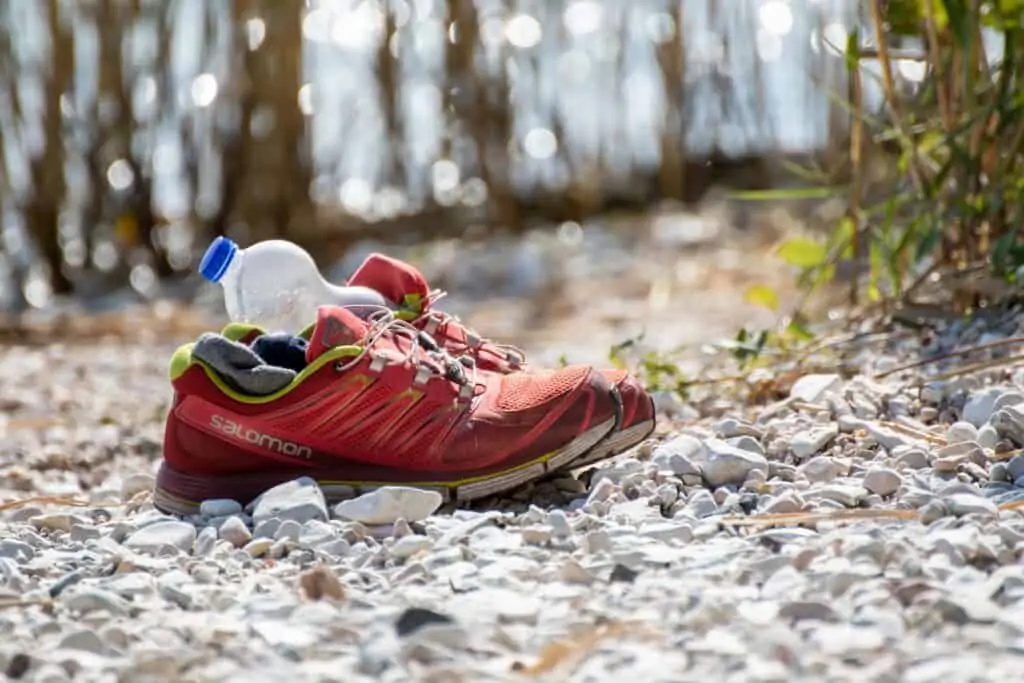I was on vacation in Arizona a few years back when my girlfriend and I drove past a horse stable.
She told me that she’d always wanted to go horseback riding, but since she grew up in the city, she’s never really had the chance.
She then looked over at me, paused for a second, and very delicately asked if people of my size were able to ride horses.
It’s a fair question and, being that she’s not obese and I am, is probably not one that occurred to her before that moment. I wasn’t upset that she asked and I didn’t know the answer, either. So we stopped in to find out.
How Much Weight Can A Horse Carry?
The general rule of thumb is that a horse can support one-fifth (or 20% of its body weight). For a 1,000-pound horse, that’s 200 pounds.
However, that figure also includes what’s called “the tack,” the term for all of the gear that goes on the horse for riding, like the saddle, stirrups, and the rest.
For bigger people like me, this is going to eliminate many breeds, unfortunately. An American Quarter Horse reaches a maximum weight of about 1,200 pounds, which means it can carry around 240 pounds total between the rider and equipment.
Which Breeds of Horse Support Larger Riders?
There are several breeds of horses that are large enough to support heavy riders! Unfortunately, I cannot guarantee that your local stable will have one.
Friesians normally weigh between 1,300 and 1,500 pounds. Based on our one-fifth rule, a larger one can support riders and equipment up to a total of 300 pounds.
Belgians are a breed of draft horse, which means they’re heavier and are usually your safest bet. Even if you don’t remember any of the specific breeds I’m listing, just remember the phrase “draft horse” when asking a stable about their options.
They normally weigh over 2,000 pounds, which means they can support a total load of riders and tack up to 400 pounds.
Another easy horse breed to remember is the Clydesdale, as most people of a certain age probably remember the Budweiser commercials they used to star in.
Clydesdales can weigh up to 2,200 pounds, which comes out to a supported weight of around 540 pounds.
Lord of the Rings fans should easily be able to remember the name of the Shire Horse, which is another top choice.
The world record for heaviest Shire horse was named Samson, who weighed 3,360 pounds! He would have been able to carry a rider who weighed over 600 pounds.
Is There a Legal Weight Limit?
There is no law or regulation that restricts the weight of horseback riders visiting stables.
That said, many stables and tour organizations limit a rider’s weight to about 250 pounds, as that is the recommended limit according to many equestrian societies.
If you’re close to 250, they might give you a pass if you’re polite enough. I lucked out because I was only a few pounds over at the time and they let me ride a horse, which is one of the few times being 5’6″ has paid off for me.
Do I Need Special Equipment?
There are a few tips and special equipment that will make things easier, not only for you but for your horse companion as well.
First, you’ll want a good mounting block, which is the term used for the step stool that allows you to get on the horse.
You’ll want a sturdy one with at least three or four steps, depending on how tall the horse is.
The reason for this is that you’ll want to be able to put your leg all the way over on the other side before you sit down. Too much weight on one side can be painful for the horse, so you’ll always want to make sure that your weight is evenly distributed.
Second, you’ll want to make sure you have the correct saddle for your comfort. If you’re uncomfortable, the horse will sense that and become uncomfortable, which is the last thing you want while riding.
Heavier riders like me are usually best off with 18-19 inch saddles, while the average horse has a preferred saddle area of about 17 inches. This is another reason why choosing the right horse to ride is very important.
If you’re going to a stable that supports heavier riders, they’ll know exactly what you need and will almost certainly have it on hand.
If you have a friend or relative who owns a horse that you want to ride, I would bring a picture of the horse to the store where you plan on buying the saddle and their experts will be able to help you find the one with the right fit.
Heavy Historical Riders
Despite this, many obese people throughout history were able to ride horses successfully over the past few thousands of years.
King George IV famously wore a corset designed for a 50-inch waist in his later years and there’s a statue of him on horseback in London’s Trafalgar Square.
The statue version of the king is slimmed down, of course, which may be related to the fact that he commissioned and paid for the statue himself two years before his death.
Emperor Charles The Fat, great-grandson of Charlemagne, and King Louis The Fat of France also rode horses despite the large sizes implied by their names.
Speaking of English monarchs, Queen Victoria was also rather short and heavy yet enjoyed horseback riding frequently.
Alternatives to Horseback Riding
If you can’t find a place near you that offers horseback riding for people of our size, there are other options for us. Depending on where you live or how far you’re willing to drive, riding a camel might be an option, as there are a good number of places that offer camel rides.
Camels are referred to as “the ship of the desert” for many reasons, but among them is the fact that the males can carry over 600 pounds on their backs with relative ease.
Another alternative, depending on your size, is a donkey ride. A mammoth donkey can support riders of up to 250 pounds and there are a fair number of places that have donkey rides as an option.
Final Thoughts
To sum up, fat people can absolutely go horseback riding under the right circumstances! If you’re looking for horse rides in your area, I would definitely call ahead and see if they support larger riders first.
If you know someone who owns a horse that you’d like to ride, ask them how much it weighs. Then, multiply your own weight by five and add about 30 pounds to cover the weight of the tack.
If the horse’s weight is the bigger of those two numbers, you should be able to ride it with the proper harness, given the owner’s permission, and if the horse agrees, of course.
I would also recommend looking for a horse riding stable or organization near you that specializes in larger folks like us because their horses will be used to the idea and more comfortable with the weight.
The most important thing in horseback riding is the safety and comfort of the horse in question because an agitated, uncomfortable, or scared horse can be extremely dangerous.
The actor Christopher Reeve, the star of the 1970s Superman movies, was thrown off of his own beloved horse’s back after the animal was spooked right before a jump.
That event resulted in a severe spinal cord injury that confined him to a wheelchair and he was completely paralyzed below the neck for the rest of his life. Such accidents are incredibly rare but are still a possibility if a horse is uncomfortable or scared.
Horseback riding can be a very fun time and I hope you’re able to find a location near you that will give you the opportunity!







